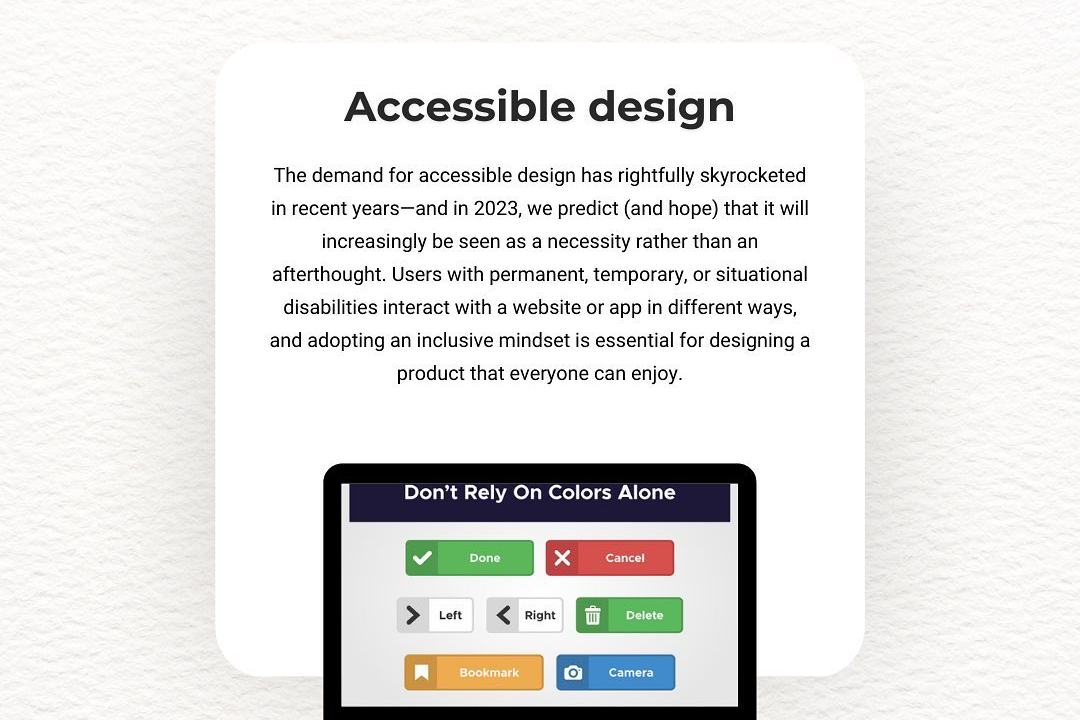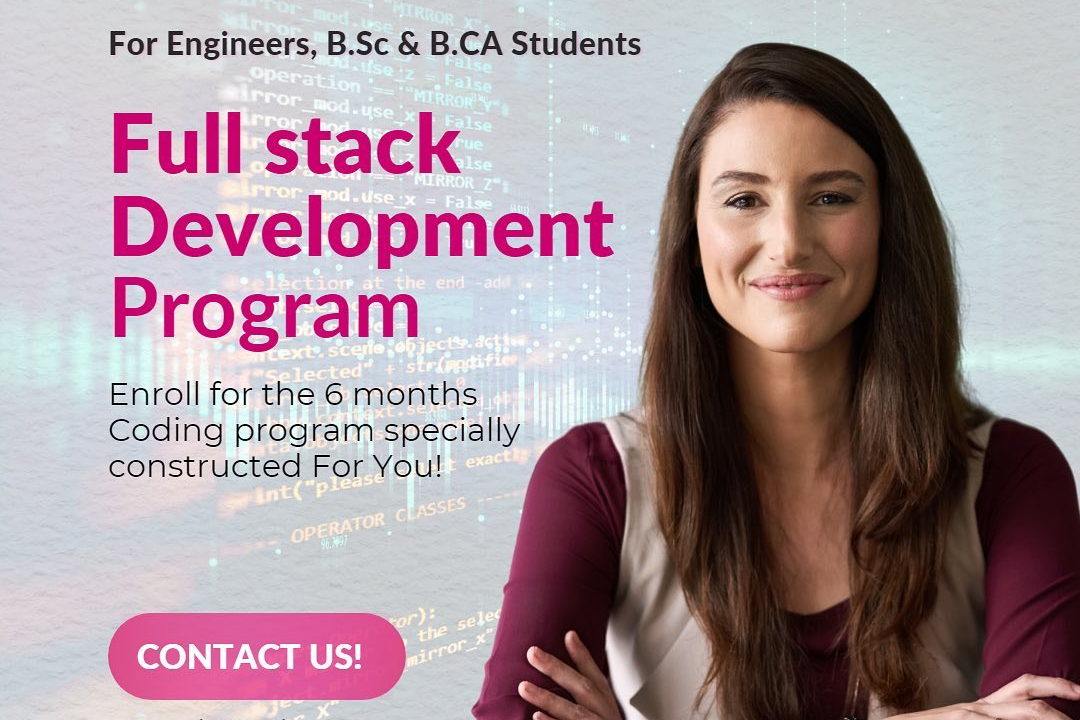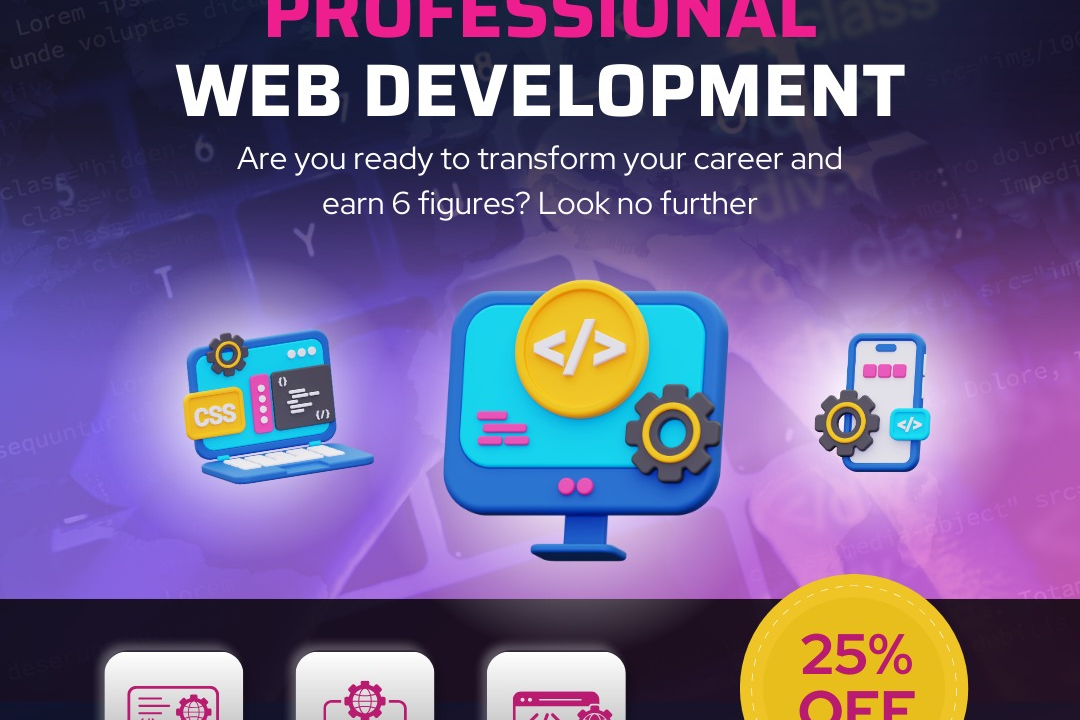Laravel Interview Question And Answer For Experiencee
Essential Laravel Interview Questions and Answers for Experienced Developers
Laravel Interview Question And Answer For Experiencee
Preparing for a Laravel interview, especially for experienced candidates, involves understanding its robust features and best practices. Laravel, a powerful PHP framework, simplifies the development of web applications through its elegant syntax, MVC architecture, and built-in tools for routing, sessions, caching, and authentication. Candidates should be ready to discuss advanced topics such as Laravel's service container, Eloquent ORM, middleware, and design patterns. This knowledge not only demonstrates their proficiency in real-time project implementations but also showcases their ability to leverage Laravel’s capabilities to build scalable and maintainable applications. Mastery over these concepts can significantly enhance a developer's value in the job market.
To Download Our Brochure: https://www.justacademy.co/download-brochure-for-free
Message us for more information: +91 9987184296
Here are some essential Laravel interview questions and answers for experienced candidates, structured in a point format:
1 - What is Laravel?
Laravel is a PHP framework designed for developing web applications. It follows the MVC (Model View Controller) architectural pattern and provides a strong foundation for building secure, scalable, and maintainable applications quickly.
2) What are Service Providers in Laravel?
Service Providers are the central place for configuring and bootstrapping Laravel applications. Every service provider comprises two main methods: `register()` for binding services in the service container and `boot()` where the service providers can perform actions after all other service providers have been registered.
3) Explain Dependency Injection in Laravel.
Dependency Injection is a design pattern that allows for the insertion of a component's dependencies when it is created. In Laravel, the service container is used to resolve dependencies, promoting loose coupling and enhancing testability.
4) What is Eloquent ORM?
Eloquent ORM (Object Relational Mapping) is Laravel's built in Active Record implementation. It allows developers to interact with the database objects and relationships using an expressive, fluent syntax, making database operations intuitive and straightforward.
5) How do you define relationships in Eloquent?
Eloquent provides several methods for defining relationships, including `hasOne`, `hasMany`, `belongsTo`, and `belongsToMany`. These methods allow you to establish various types of relationships between models, enabling efficient data retrieval and association management.
6) What are Middleware in Laravel?
Middleware acts as a bridge between a request and response in Laravel applications. It is used for tasks such as authentication, logging, and CORS, by filtering HTTP requests entering the application and re routing them to the appropriate request handlers.
7) How can you perform database migrations in Laravel?
Database migrations in Laravel are handled through the command line using the `php artisan migrate` command. Migrations allow for version control of database schemas, which can be created with `php artisan make:migration`, ensuring that database structure can be created and modified easily.
8) What are Laravel Artisan Commands?
Artisan is the command line interface included with Laravel. It provides a variety of helpful commands to streamline tasks, such as generating models, controllers, migrations, and more. Developers can also create custom Artisan commands to automate repetitive tasks.
9) How to handle exceptions in Laravel?
Laravel provides a centralized exception handling mechanism through the `app/Exceptions/Handler.php` file. Developers can define how to handle exceptions globally, logging them, rendering custom error views, or responding with JSON for API development.
10) What is Route Model Binding?
Route Model Binding is a feature that allows automatic injection of model instances into routes based on the incoming request. It simplifies route definitions by allowing developers to type hint models directly, ensuring that the correct instance is injected based on the identifier in the URL.
11 - Explain the use of Queues in Laravel.
Queues in Laravel enable deferred processing of time consuming tasks, such as sending emails or processing uploads. Using the queue system improves application performance by allowing synchronous operations to be processed asynchronously, thus enhancing user experience.
12) What is Laravel's Event Handling system?
Laravel’s Event Handling system provides a simple observer implementation for handling events. Events are dispatched using models, and listeners can respond to these events, allowing for decoupled, clean architecture and enhancing the application's scalability.
13) How can you define custom validation rules in Laravel?
Custom validation rules can be defined in Laravel by creating a custom rule class using `php artisan make:rule RuleName`. These rules can then be utilized in form requests or directly in the controller to enforce complex validation logic.
14) What is the purpose of configuration caching in Laravel?
Configuration caching optimizes performance by combining all configuration files into a single cached file. This improves application speed by reducing the need for multiple I/O operations, best utilized when deploying application in production.
15) How does Laravel implement CSRF protection?
Laravel implements CSRF (Cross Site Request Forgery) protection by generating a CSRF token for each active user session. This token is validated for any state changing requests, ensuring that submissions are authorized and preventing unauthorized action.
These questions and answers can help candidates demonstrate their expertise and understanding of Laravel, making them well prepared for technical interviews in the field.
Here are additional essential Laravel interview questions and answers for experienced candidates, structured in a point format:
16) What is Facades in Laravel?
Facades provide a static interface to classes that are available in the application's service container. They simplify access to these classes and help in resolving the underlying service without needing to instantiate the object directly.
17) What is Blade templating engine?
Blade is Laravel’s powerful templating engine. It enables the use of PHP within the HTML code, supports template inheritance, and provides control structures like loops and conditional statements to create dynamic views with a clean syntax.
18) How does Laravel handle database seeding?
Database seeding in Laravel allows developers to populate the database with test data using seed classes. This can be achieved via the command `php artisan db:seed`, which executes the run method within designated seed files.
19) Explain Laravel's Cache System.
Laravel provides a unified API for caching through various backends such as Redis, Memcached, and databases. The caching methods improve application performance by storing frequently accessed data, reducing load times, and minimizing expensive database queries.
20) What is the purpose of route caching in Laravel?
Route caching compiles all of your application routes into a single cached file, which significantly reduces the route registration overhead. This is done using the `php artisan route:cache` command and is especially beneficial for performance in production.
21 - How can you implement authentication in Laravel?
Laravel offers a built in authentication system that can be scaffolded using `php artisan make:auth`. This provides user registration, login, logout, and password reset functionality out of the box, making it easy to implement secure authentication.
22) What are Policies in Laravel?
Policies are a way to organize authorization logic around a particular model or resource in Laravel. They group authorization logic together, allowing developers to control access to specific actions based on the user's role or permissions.
23) How does Laravel handle Localization?
Laravel's localization feature allows applications to be multi lingual. Language files located in the `resources/lang` directory contain translated strings, and the app can switch between locales using the `App::setLocale()` method or through middleware.
24) What is Laravel's Task Scheduling?
Laravel’s task scheduling enables developers to define scheduled tasks in the application without requiring a separate cron entry for each task. This is achieved through the `app/Console/Kernel.php` file where commands can be scheduled using a fluent and expressive syntax.
25) Can you explain the concept of Event Broadcasting in Laravel?
Event Broadcasting allows real time events to be shared across different channels, enabling dynamic updates in applications. Using Laravel Echo and Pusher or Socket.IO, developers can broadcast events and listen for them on the client side, improving user engagement.
26) What is the difference between `hasMany` and `belongsToMany`?
`hasMany` is used for one to many relationships, where a single model can own multiple instances of another model. In contrast, `belongsToMany` defines many to many relationships, where both models can own multiple instances of each other, requiring a pivot table.
27) Explain the purpose of the .env file in Laravel.
The `.env` file is used to configure environment variables for Laravel applications. It allows developers to store sensitive information like database credentials and API keys securely, and these configurations can be accessed globally within the application.
28) What is the use of the `config` function?
The `config` function in Laravel is used to access the configuration values defined in the configuration files located in the `config` directory. It allows developers to retrieve settings dynamically and centralizes configuration management.
29) How can you implement file uploads in Laravel?
File uploads in Laravel are handled via the `request() >file('inputName')` method, which retrieves the uploaded file. The files can be stored using the `store` method, and Laravel provides various filesystem drivers to interact with file systems seamlessly.
30) What are the advantages of using Laravel Mix?
Laravel Mix is a tool for compiling and optimizing assets such as CSS and JavaScript. It simplifies the process of asset management, supports versioning, and integrates tools like Webpack, making it easier to manage front end workflows.
31 - How does Laravel support testing?
Laravel provides built in support for testing via PHPUnit. It allows developers to write unit tests, feature tests, and browser tests to ensure code quality and functionality. Laravel’s testing helpers, such as the `assert` methods, streamline the process.
32) What are Custom Artisan Commands?
Custom Artisan Commands in Laravel can be created to encapsulate complex or repetitive tasks. This is done by creating a new command using `php artisan make:command CommandName`, where developers can define their logic in the `handle()` method.
33) Explain the use of `with` method in Eloquent.
The `with` method in Eloquent is used for eager loading relationships. It allows developers to load related models alongside the primary model, reducing the number of queries and enhancing performance by preventing the N+1 query problem.
34) What is Laravel Telescope?
Laravel Telescope is a debugging assistant for Laravel applications that provides insights into requests, exceptions, database queries, and much more. It helps developers monitor applications during development, facilitating easier troubleshooting and performance optimization.
35) How can you enforce HTTPS in Laravel?
Laravel can enforce HTTPS by using middleware that checks if the request is secure. Developers can apply the `\App\Http\Middleware\ForceHttps` middleware in their route or globally in the `app/Http/Kernel.php` to redirect non secure requests to HTTPS.
These additional questions and answers can provide further depth to a candidate’s understanding of Laravel, allowing them to showcase their proficiency effectively during interviews.
Course Overview
The “Laravel Interview Questions and Answers for Experienced Professionals” course is designed to equip learners with an extensive understanding of Laravel’s core concepts, advanced features, and best practices to excel in technical interviews. This comprehensive program covers a wide array of essential topics, including Eloquent ORM, routing, middleware, and authentication, while also delving into advanced subjects like API development, event broadcasting, and testing strategies. Participants will engage with real-world scenarios and practical examples, enhancing their problem-solving skills and confidence in discussing complex Laravel concepts. By the end of this course, learners will be well-prepared to tackle challenging interview questions and demonstrate their expertise, positioning themselves as desirable candidates in the job market.
Course Description
The “Laravel Interview Questions and Answers for Experienced Professionals” course is specifically designed to prepare individuals for technical interviews by enhancing their knowledge and expertise in Laravel. Covering a broad spectrum of topics from fundamental concepts to advanced techniques, the course emphasizes real-world applications and best practices. Participants will explore areas such as Eloquent ORM, routing, middleware, authentication, API development, and testing, ensuring they have a comprehensive understanding of the framework. Through engaging scenarios and hands-on exercises, learners will build their confidence to effectively tackle challenging interview questions, positioning themselves as skilled candidates in the competitive job market.
Key Features
1 - Comprehensive Tool Coverage: Provides hands-on training with a range of industry-standard testing tools, including Selenium, JIRA, LoadRunner, and TestRail.
2) Practical Exercises: Features real-world exercises and case studies to apply tools in various testing scenarios.
3) Interactive Learning: Includes interactive sessions with industry experts for personalized feedback and guidance.
4) Detailed Tutorials: Offers extensive tutorials and documentation on tool functionalities and best practices.
5) Advanced Techniques: Covers both fundamental and advanced techniques for using testing tools effectively.
6) Data Visualization: Integrates tools for visualizing test metrics and results, enhancing data interpretation and decision-making.
7) Tool Integration: Teaches how to integrate testing tools into the software development lifecycle for streamlined workflows.
8) Project-Based Learning: Focuses on project-based learning to build practical skills and create a portfolio of completed tasks.
9) Career Support: Provides resources and support for applying learned skills to real-world job scenarios, including resume building and interview preparation.
10) Up-to-Date Content: Ensures that course materials reflect the latest industry standards and tool updates.
Benefits of taking our course
Functional Tools
1 - Laravel Framework
The course utilizes the Laravel framework itself, which is one of the most popular PHP frameworks used for web application development. Laravel's elegant syntax and robust features streamline the development process, allowing learners to understand its core components and best practices quickly. Students will be guided through the intricacies of Laravel, including routing, middleware, authentication, and database interactions. Mastery of Laravel equips participants with the skills to build scalable and maintainable web applications.
2) PHP
A solid understanding of PHP is crucial for mastering Laravel, as the framework is built on this programming language. The course covers the fundamentals of PHP, including object oriented programming, error handling, and data manipulation. By reinforcing PHP concepts, students gain the necessary background to tackle Laravel's features effectively. This foundational knowledge ensures that learners can write clean, efficient code and troubleshoot issues within their Laravel applications.
3) Composer
Composer, a dependency manager for PHP, is a key tool in the Laravel ecosystem. The course instructs students on how to install Laravel using Composer, manage packages, and handle library dependencies. Learners will understand how to use Composer to streamline their development workflow, ensuring their projects remain up to date with the latest libraries. This knowledge of Composer not only enhances productivity but also prepares learners for real world development scenarios.
4) Git and GitHub
Version control is an essential aspect of software development, and Git is the most widely used version control system. The course emphasizes the importance of version control in collaborative projects, guiding learners on using Git to track changes, manage branches, and collaborate with other developers. Moreover, students will explore GitHub, a platform that hosts Git repositories, enabling them to showcase portfolios, collaborate on open source projects, and contribute to the tech community.
5) Postman
Postman is an invaluable tool for API testing and development, making it a key part of the curriculum. Participants will learn how to use Postman for sending requests, testing APIs, and automating workflows in their Laravel applications. The course explains the importance of API integrations and how Postman simplifies the testing process, allowing students to produce high quality, reliable applications that interact seamlessly with other services and technologies.
6) MySQL
Understanding database management is vital for web development, and MySQL is the most commonly used relational database management system with Laravel. The course covers MySQL fundamentals, such as database design, queries, and relationships. Students will learn how to integrate MySQL with their Laravel applications, enabling them to store, retrieve, and manipulate data efficiently. Knowledge of MySQL empowers learners to create data driven applications that meet user needs and business requirements.
7) Laravel Mix
Laravel Mix is a powerful build tool for compiling and optimizing assets such as CSS and JavaScript within Laravel applications. The course introduces students to using Laravel Mix for managing front end assets, making it easier to incorporate tools like Sass and Webpack. By mastering Laravel Mix, learners can enhance the performance and efficiency of their applications, ensuring a better user experience through optimized load times and improved resource management.
8) Tinker
Tinker is an interactive shell included with Laravel that allows developers to interact with their applications’ code directly. The course provides hands on experience with Tinker, enabling students to perform quick tests, run Artisan commands, and manipulate Eloquent models in real time. This powerful tool fosters a deeper understanding of Laravel's features and enhances learners' confidence in debugging and refining their applications through an interactive and immediate feedback process.
By incorporating these tools into the curriculum, the Laravel interview question and answer course equips students with comprehensive knowledge and practical skills essential for excelling in job interviews and career advancement.
Here's an expanded list of topics and concepts that can enhance the Laravel course offering at JustAcademy:
9) Eloquent ORM
Eloquent ORM (Object Relational Mapping) is a key feature of Laravel that simplifies database interactions. This section of the course covers how to define models, relationships, and perform CRUD (Create, Read, Update, Delete) operations using Eloquent. Learners will explore the advantages of using Eloquent over traditional SQL queries, allowing them to write cleaner code and manage database migrations effectively.
10) Middleware
Middleware in Laravel acts as a filtering mechanism for incoming requests. The course will explain how to create and utilize middleware for tasks such as authentication, logging, and input validation. Understanding middleware empowers developers to manage the application lifecycle better and enforce security measures, enhancing overall application robustness.
11 - Authentication and Authorization
Effective user authentication is critical in web applications. This segment will focus on Laravel's built in authentication mechanisms, including user registration, password resets, and role based access control. Students will learn best practices for implementing security measures and how to manage user permissions, ensuring their applications can handle different levels of access securely.
12) RESTful APIs Development
With the rise of mobile and web applications relying on backend services, RESTful API development is vital. The course will teach students how to build and consume RESTful APIs using Laravel, covering routing, resource controllers, and API versioning. Participants will learn to structure their APIs for scalability and maintainability, making them industry ready for modern application architecture.
13) Unit Testing and TDD (Test Driven Development)
Testing is essential for quality assurance in software development. This section introduces Laravel's testing capabilities, including PHPUnit and feature testing. Learners will understand the principles of Test Driven Development (TDD) and how to create robust tests for their applications. This knowledge fosters a quality first mindset and prepares students for delivering fault tolerant software.
14) Queues and Job Management
Laravel provides built in support for job queues, which allows developers to defer time consuming tasks. This course segment will cover how to leverage queues to improve application performance, along with hands on examples of job processing and event management. Students will grasp the significance of asynchronous processing, optimizing user experience by ensuring faster response times.
15) Blade Templating Engine
Blade is Laravel’s powerful templating engine. This part of the course will expose students to Blade syntax and features, such as template inheritance and sections. Knowledge of Blade allows learners to create dynamic and reusable views, enhancing the maintainability of frontend components in Laravel applications.
16) Package Development
Students will learn how to create custom Laravel packages for modular development. This section will cover best practices for structuring packages, including service providers and facades. Developing packages fosters a deeper understanding of Laravel and contributes to the community by enabling the sharing of reusable code.
17) Database Seeding and Factories
To streamline the development and testing processes, Laravel provides database seeding and factories. This course section will teach learners how to generate sample data, facilitating easier testing and demonstration of applications. Understanding these features allows students to create realistic testing environments and accelerate their development cycles.
18) Deployment Strategies
Deployment is a crucial stage in the application lifecycle. This segment covers various deployment strategies and tools, including server configuration, environment variables, and using services like Forge and Envoyer. Students will learn how to prepare their applications for production and ensure smooth operation after deployment.
19) Localization and Internationalization
Building applications for a global audience requires localization and internationalization. This course aspect will guide students through Laravel's localization features, enabling them to create multilingual applications. This skill is essential for developers aiming to expand their reach into diverse markets.
20) WebSocket and Real Time Events
For modern applications, real time interaction is vital. This section will explore how to integrate WebSocket and Pusher with Laravel for real time event broadcasting. Learners will understand how to implement features such as notifications, chat applications, and live updates, enhancing user engagement.
By incorporating these advanced topics into the Laravel course, JustAcademy provides a comprehensive learning experience that equips students with the skills and knowledge necessary for a successful career in web development. The course not only prepares learners for job interviews but also equips them with practical skills for real world applications.
Browse our course links : https://www.justacademy.co/all-courses
To Join our FREE DEMO Session:
This information is sourced from JustAcademy
Contact Info:
Roshan Chaturvedi
Message us on Whatsapp:
Email id: info@justacademy.co
Ios Automation Testing Interview Questions
Auto Layout Layout in iOS Interview Questions











